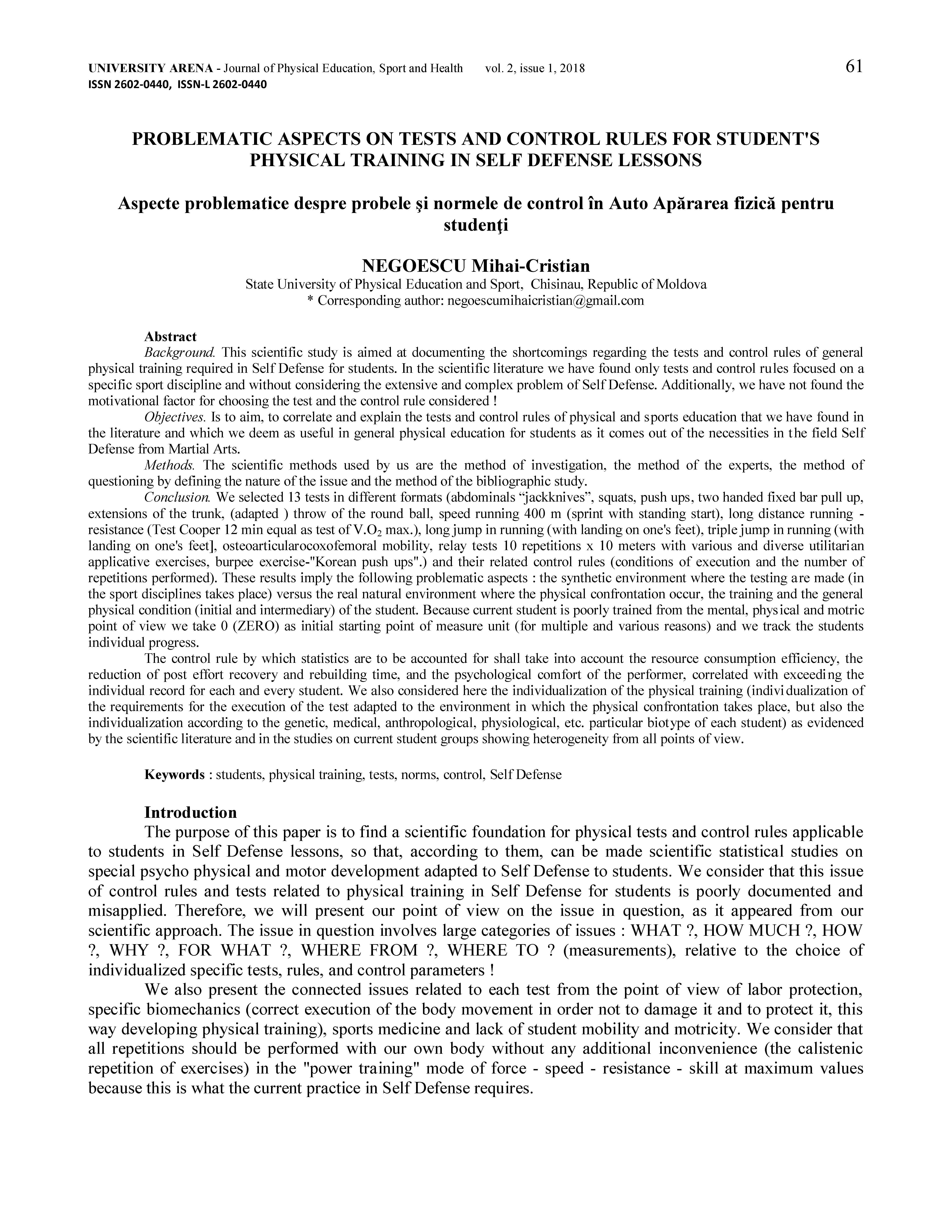PROBLEMATIC ASPECTS ON TESTS AND CONTROL RULES FOR STUDENT'S PHYSICAL TRAINING IN SELF DEFENSE LESSONS
DOI:
https://doi.org/10.62229/UaII_1_18-10Keywords:
students, physical training, tests, norms, control, Self DefenseAbstract
Background. This scientific study is aimed at documenting the shortcomings regarding the tests and control rules of general physical training required in Self Defense for students. In the scientific literature we have found only tests and control rules focused on a specific sport discipline and without considering the extensive and complex problem of Self Defense. Additionally, we have not found the motivational factor for choosing the test and the control rule considered !
Objectives. Is to aim, to correlate and explain the tests and control rules of physical and sports education that we have found in the literature and which we deem as useful in general physical education for students as it comes out of the necessities in the field Self Defense from Martial Arts.
Methods. The scientific methods used by us are the method of investigation, the method of the experts, the method of questioning by defining the nature of the issue and the method of the bibliographic study.
Conclusion. We selected 13 tests in different formats (abdominals “jackknives”, squats, push ups, two handed fixed bar pull up, extensions of the trunk, (adapted ) throw of the round ball, speed running 400 m (sprint with standing start), long distance running - resistance (Test Cooper 12 min equal as test of V.O2 max.), long jump in running (with landing on one's feet), triple jump in running (with landing on one's feet], osteoarticularocoxofemoral mobility, relay tests 10 repetitions x 10 meters with various and diverse utilitarian applicative exercises, burpee exercise-"Korean push ups".) and their related control rules (conditions of execution and the number of repetitions performed). These results imply the following problematic aspects : the synthetic environment where the testing are made (in the sport disciplines takes place) versus the real natural environment where the physical confrontation occur, the training and the general physical condition (initial and intermediary) of the student. Because current student is poorly trained from the mental, physical and motric point of view we take 0 (ZERO) as initial starting point of measure unit (for multiple and various reasons) and we track the students individual progress.
The control rule by which statistics are to be accounted for shall take into account the resource consumption efficiency, the reduction of post effort recovery and rebuilding time, and the psychological comfort of the performer, correlated with exceeding the individual record for each and every student. We also considered here the individualization of the physical training (individualization of the requirements for the execution of the test adapted to the environment in which the physical confrontation takes place, but also the individualization according to the genetic, medical, anthropological, physiological, etc. particular biotype of each student) as evidenced by the scientific literature and in the studies on current student groups showing heterogeneity from all points of view.
Keywords :


